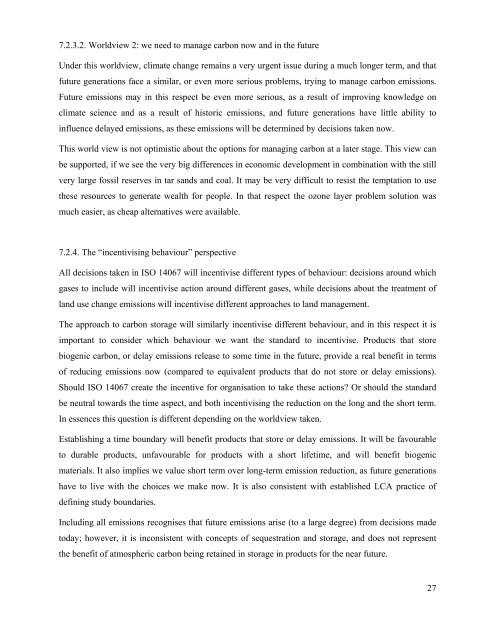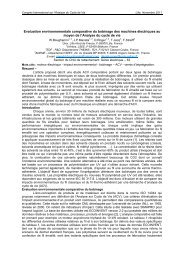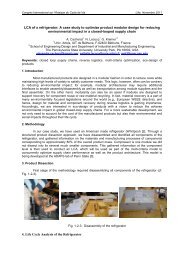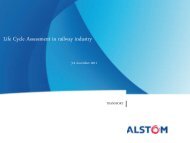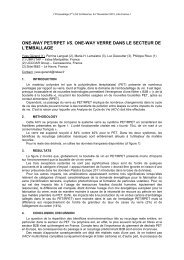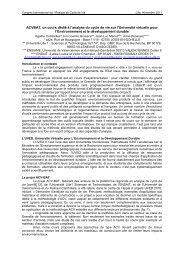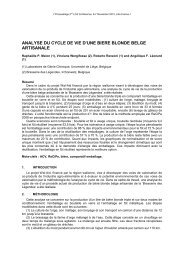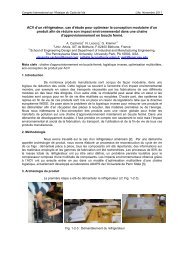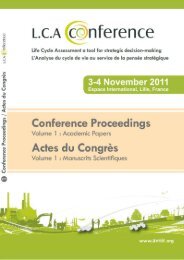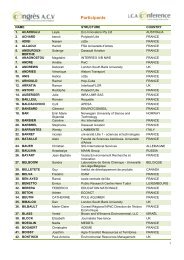Assessing Temporary Carbon Storage in Life Cycle Assessment and ...
Assessing Temporary Carbon Storage in Life Cycle Assessment and ...
Assessing Temporary Carbon Storage in Life Cycle Assessment and ...
Create successful ePaper yourself
Turn your PDF publications into a flip-book with our unique Google optimized e-Paper software.
7.2.3.2. Worldview 2: we need to manage carbon now <strong>and</strong> <strong>in</strong> the future<br />
Under this worldview, climate change rema<strong>in</strong>s a very urgent issue dur<strong>in</strong>g a much longer term, <strong>and</strong> that<br />
future generations face a similar, or even more serious problems, try<strong>in</strong>g to manage carbon emissions.<br />
Future emissions may <strong>in</strong> this respect be even more serious, as a result of improv<strong>in</strong>g knowledge on<br />
climate science <strong>and</strong> as a result of historic emissions, <strong>and</strong> future generations have little ability to<br />
<strong>in</strong>fluence delayed emissions, as these emissions will be determ<strong>in</strong>ed by decisions taken now.<br />
This world view is not optimistic about the options for manag<strong>in</strong>g carbon at a later stage. This view can<br />
be supported, if we see the very big differences <strong>in</strong> economic development <strong>in</strong> comb<strong>in</strong>ation with the still<br />
very large fossil reserves <strong>in</strong> tar s<strong>and</strong>s <strong>and</strong> coal. It may be very difficult to resist the temptation to use<br />
these resources to generate wealth for people. In that respect the ozone layer problem solution was<br />
much easier, as cheap alternatives were available.<br />
7.2.4. The “<strong>in</strong>centivis<strong>in</strong>g behaviour” perspective<br />
All decisions taken <strong>in</strong> ISO 14067 will <strong>in</strong>centivise different types of behaviour: decisions around which<br />
gases to <strong>in</strong>clude will <strong>in</strong>centivise action around different gases, while decisions about the treatment of<br />
l<strong>and</strong> use change emissions will <strong>in</strong>centivise different approaches to l<strong>and</strong> management.<br />
The approach to carbon storage will similarly <strong>in</strong>centivise different behaviour, <strong>and</strong> <strong>in</strong> this respect it is<br />
important to consider which behaviour we want the st<strong>and</strong>ard to <strong>in</strong>centivise. Products that store<br />
biogenic carbon, or delay emissions release to some time <strong>in</strong> the future, provide a real benefit <strong>in</strong> terms<br />
of reduc<strong>in</strong>g emissions now (compared to equivalent products that do not store or delay emissions).<br />
Should ISO 14067 create the <strong>in</strong>centive for organisation to take these actions? Or should the st<strong>and</strong>ard<br />
be neutral towards the time aspect, <strong>and</strong> both <strong>in</strong>centivis<strong>in</strong>g the reduction on the long <strong>and</strong> the short term.<br />
In essences this question is different depend<strong>in</strong>g on the worldview taken.<br />
Establish<strong>in</strong>g a time boundary will benefit products that store or delay emissions. It will be favourable<br />
to durable products, unfavourable for products with a short lifetime, <strong>and</strong> will benefit biogenic<br />
materials. It also implies we value short term over long-term emission reduction, as future generations<br />
have to live with the choices we make now. It is also consistent with established LCA practice of<br />
def<strong>in</strong><strong>in</strong>g study boundaries.<br />
Includ<strong>in</strong>g all emissions recognises that future emissions arise (to a large degree) from decisions made<br />
today; however, it is <strong>in</strong>consistent with concepts of sequestration <strong>and</strong> storage, <strong>and</strong> does not represent<br />
the benefit of atmospheric carbon be<strong>in</strong>g reta<strong>in</strong>ed <strong>in</strong> storage <strong>in</strong> products for the near future.<br />
27


